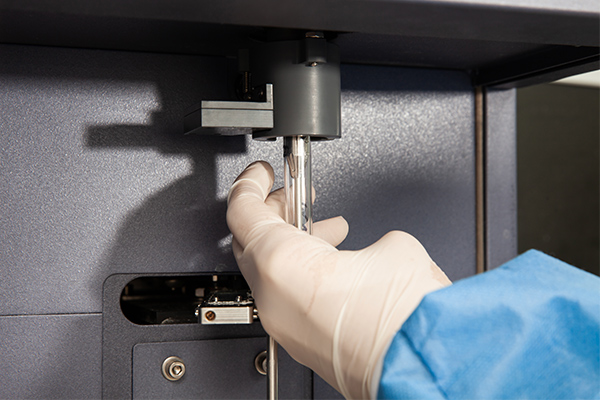Inmunómica traslacional en neoplasias hematológicas


Clínica Universitaria de Navarra
Pamplona, EspañaPublicaciones en colaboración con investigadores/as de Clínica Universitaria de Navarra (146)
2024
-
An automated network-based tool to search for metabolic vulnerabilities in cancer
Nature Communications , Vol. 15, Núm. 1
-
Belantamab mafodotin: an important treatment option for vulnerable patients with triple class exposed relapsed and/or refractory multiple myeloma
Haematologica
-
CAR-T and Bispecific Antibodies: The New Standard for Relapsed and Refractory Multiple Myeloma, or Reserved for Late-Line Salvage Therapy?
Hemato, Vol. 5, Núm. 2, pp. 171-179
-
Concordancia entre las escalas de valoración del riesgo de tromboembolismo venoso en pacientes con patología médica en urgencias
Emergencias : revista de la Sociedad Espanola de Medicina de Emergencias, Vol. 36, Núm. 5, pp. 342-350
-
Consensus guidelines and recommendations for the management and response assessment of chimeric antigen receptor T-cell therapy in clinical practice for relapsed and refractory multiple myeloma: a report from the International Myeloma Working Group Immunotherapy Committee
The Lancet Oncology, Vol. 25, Núm. 8, pp. e374-e387
-
Curative Strategy for High-Risk Smoldering Myeloma: Carfilzomib, Lenalidomide, and Dexamethasone (KRd) Followed by Transplant, KRd Consolidation, and Rd Maintenance
Journal of Clinical Oncology, Vol. 42, Núm. 27, pp. 3247-3256
-
Epigenetic-based differentiation therapy for Acute Myeloid Leukemia
Nature Communications, Vol. 15, Núm. 1
-
Ide-cel vs standard regimens in triple-class–exposed relapsed and refractory multiple myeloma: updated KarMMa-3 analyses
Blood
-
Immunoparesis recovery in newly diagnosed transplant ineligible multiple myeloma patients, an independent prognostic factor that complements minimal residual disease
Annals of Hematology
-
Improving the Access of Highly Sensitized Patients to Kidney Transplantation From Deceased Donors: The Spanish PATHI Program With Allocation Based on the Virtual Crossmatch
Transplantation, Vol. 108, Núm. 3, pp. 787-801
-
Isatuximab-pomalidomide-dexamethasone versus pomalidomide-dexamethasone in patients with relapsed and refractory multiple myeloma: final overall survival analysis
Haematologica, Vol. 109, Núm. 7, pp. 2239-2249
-
Long-term survival and safety of elranatamab in patients with relapsed or refractory multiple myeloma: Update from the MagnetisMM-3 study
HemaSphere
-
Plain language summary of the CARTITUDE-4 study of ciltacabtagene autoleucel for the treatment of people with relapsed or refractory multiple myeloma
Future Oncology
-
Plain language summary of the KarMMa-3 study of ide-cel or standard of care regimens in people with relapsed or refractory multiple myeloma
Future Oncology, Vol. 20, Núm. 18, pp. 1221-1235
-
Practical Aspects of Immunotherapy: A Report from the 20th International Myeloma Society (IMS) Annual Meeting
Clinical Lymphoma, Myeloma and Leukemia
-
Prediction model for major bleeding in anticoagulated patients with cancer-associated venous thromboembolism using machine learning and natural language processing
Clinical and Translational Oncology
-
Profilaxis de la enfermedad tromboembólica venosa en pacientes hospitalizados por patología médica desde los servicios de urgencias españoles: estudio PROTESU II
Emergencias : revista de la Sociedad Espanola de Medicina de Emergencias, Vol. 36, Núm. 4, pp. 271-280
-
Real-World Data on Therapies for Relapsed or Refractory Multiple Myeloma: Key Data from ASH 2023—A Podcast
Advances in Therapy
-
Recovery of uninvolved heavy/light chain pair immunoparesis in newly diagnosed transplant-eligible myeloma patients complements the prognostic value of minimal residual disease detection
Haematologica, Vol. 109, Núm. 6, pp. 1909-1917
-
Selinexor, daratumumab, bortezomib and dexamethasone for the treatment of patients with relapsed or refractory multiple myeloma: results of the phase II, non-randomized, multicenter GEM-SELIBORDARA study
Haematologica, Vol. 109, Núm. 7, pp. 2219-2228